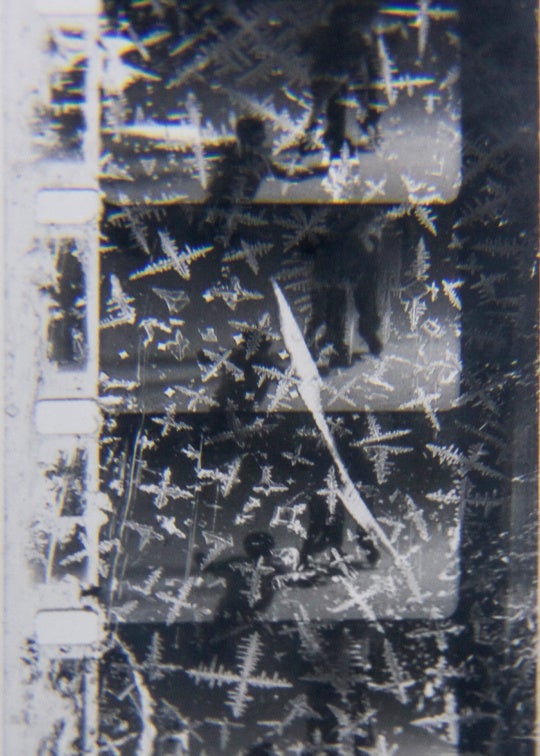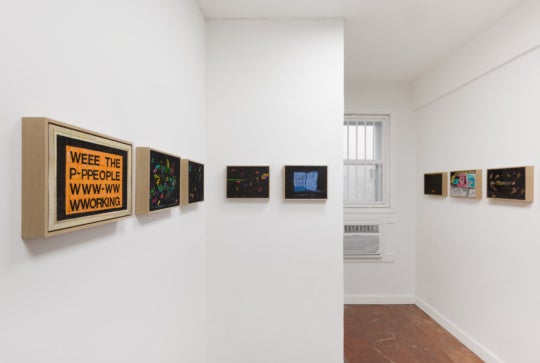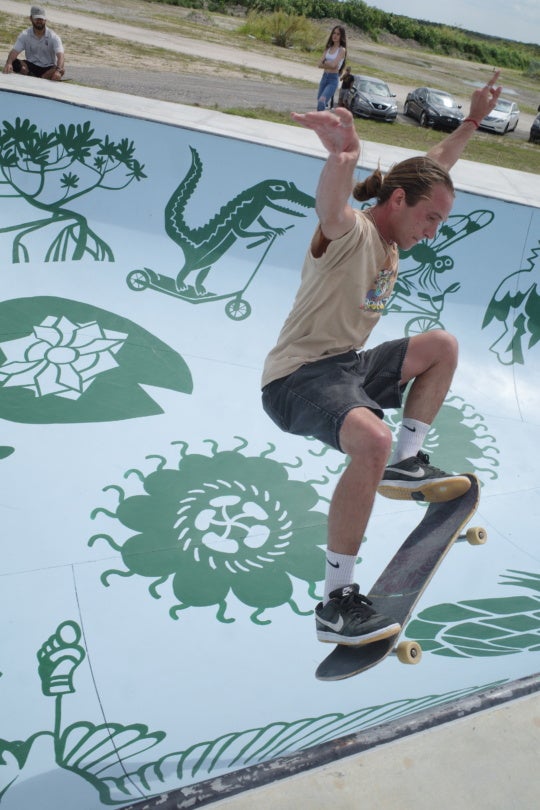
The exhibition “Staring at the Sun” addresses the “death” and redemption of contemporary painting with a diverse selection of works by artists who use abstraction in interesting and invigorating ways. Curated by artist and Georgia State University professor Craig Drennen, the show borrows its title from a 2004 song of the same name by the smart indie band TV on the Radio. The exhibition hangs its premise on the song’s use of the sun as a symbol of immense promise and as a harbinger of death. The song’s lyrics are full of existential ambivalence about the future, opening with the contrasting line, “Cross the street from your storefront cemetery.” Commenting on the seemingly directionless state of contemporary abstraction, the exhibition’s press release states: “Since early in the 20th century, abstraction has also carried within it the seeds of its own demise. Reductive trends ignited in Europe and Russia by 1920 anticipated a future endpoint beyond which art could no longer be reduced.”
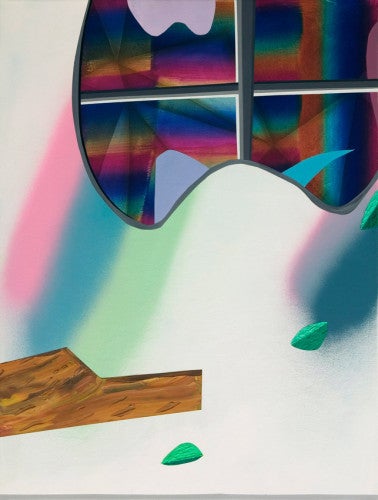
The exhibition’s comparison of painterly abstraction’s tenuous historical progress and the sun’s eventual destruction of the human species is a very loose analogy, but a telling one, nonetheless. The show’s brilliant associative viewpoint asserts a positive status for painting and, interpreted liberally, ultimately conjures questions about art’s identity crisis as a cultural phenomenon; what are its true epistemological limitations, and how can it function as a good for the individual or, to borrow the press release’s long view, for society? Stylistic resemblances among the works tap into these questions and more directly address the relationship contemporary image makers have with digital technology.
Curiously, much of today’s painting has little in common with the minimal trappings of early abstraction, which anticipated the emergence of digital media. Representing an array of ideological approaches from different times and geographically distributed locales, such artists as Barnett Newman, Piet Mondrian, and Josef Albers radically abandoned pictorial conventions that signified what it meant to see in a human way. No less human, early abstract compositions toyed with pure colors, pure geometric structure, and subject matter devoid of readable and recognizable symbols. In the absence of democratic technologies that would make creating and sharing imagery easy and fast, first-wave non-objectivity expanded through a variety of -isms and accompanying philosophies that located their impetus in the individual’s ability for transcendence through bodily experience of materials—a moral/teleological tenor infused these original practices. Resulting visual experiments triggered a loosening of traditional spatial perspectives and color relationships that in turn predicted the digital space of computation, where distortions are understandably but somewhat ironically manifested in a virtual space that is divorced from existential dilemma. Imagery’s eventual saturation and sheer accessibility creates conditions that produce different artistic approaches with alternative aesthetic and social potentials.

Lauren Silva’s paintings register differently than works that aren’t digitally informed. Her oil paintings explore a discontinuous space and time that is marked by swaths of hazy fields and strictly delineated structure. Forms appear that are deeply mysterious. Gleam contains an oddly shaped window in the upper right corner that reveals a folded and billowing tapestry that insinuates an alternate environment to the rest of the picture. Contrast that with a facile space dominating the painting where a shard of wood coexists with what looks like a provisional experimentation with a digital paint brush tool. Splitter uses similarly evasive imagery. A voluminous green background accommodates paint handling that is both freewheeling and expertly contrived. Provocatively constructed space eludes easy theorization, sliding into temporary meaninglessness. Silva’s smaller mixed media works occupy a transitional, less stylistically sure territory. Painted in watercolor, their disparate improvised forms bleed and overlap in ways that obscure space and demystify her usual gestural repertoire.
Picking up on the concept of illegibility, Eleanor Aldrich’s Lawn Chairs—composed of construction caulking, enamel, silicone, and oil on panel—looks both familiar and foreign. The painting’s under layer feels like a printed facsimile of a texture—it shines through a skeinlike grill of impasto piped lines. Disorienting fluctuations of scale slow down the viewing experience—an immense and homogeneous soup of texture drifts in and out of three-dimensional, overlaid mixed media. Despite the immediate association with the titular subject, the vibrating tension between layers opens up a dimensionality that feels both concrete and shimmeringly transient.

Made of dyed rice, resin, and oil paint, Aldrich’s TV does something similar. A noisy and palpable bed of materials is encircled by the frame of a television tube. The television’s tube, tuned to static, is pressed up against the picture plane. The effect is as deadpan as it is transcendental. In spite of its ability to hold a viewer, TV’s implicit confrontation with media culture engenders an emptiness that vacillates between empty-good and empty-bad.
Jane Fox Hipple and Bonnie Maygarden each riff on the well-curated similarities among the exhibition’s works. Hipple’s mixed-media constructions aesthetically anchor the show’s other works with candid presentations of raw materials. The rawness and matter-of-fact messiness of Hipple’s work tracks well alongside Maygarden’s trompe l’oeil method, which in high fidelity mimics the look of a photograph or a still from a digital image manipulation. Maygarden’s images are derived by spraying folded canvas from different angles. Paint behaves like light, bathing exposed areas with pigment. Shrewd bravado balances with Hipple’s brute fact.
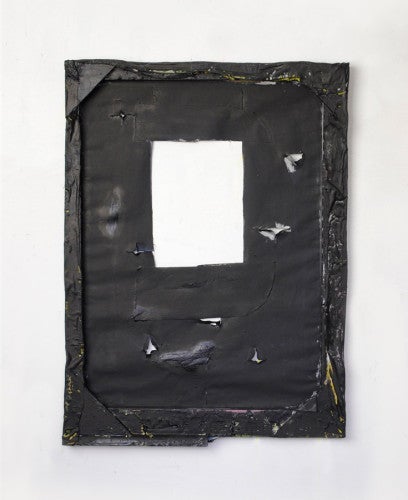
Polymath and founding father of computing John Von Neumann surmised that the difference between people and intelligent machines was that people were more mercurial, less dependable, but powerful computers in their own right based on the statistical and analog nature of the central nervous system. This analogue behavior is writ large in culture. If nothing else, “Staring at the Sun” demonstrates that the power of communication relies on subtle polarity and that leaps of inspiration rely on contradiction and questions. As a consciousness, Art has maybe not achieved much since its modern inception, and as a moral or technological phenomenon, it may be woefully dim. But as a stand-in for the incongruous, over-saturated, beautiful, and damned culture we live in, its star burns bright.



